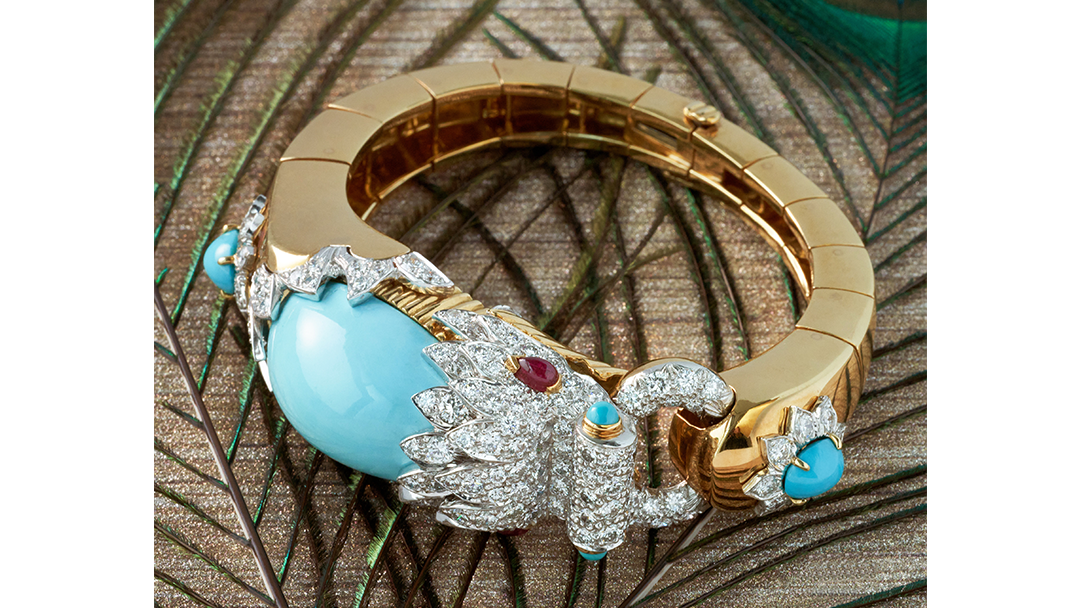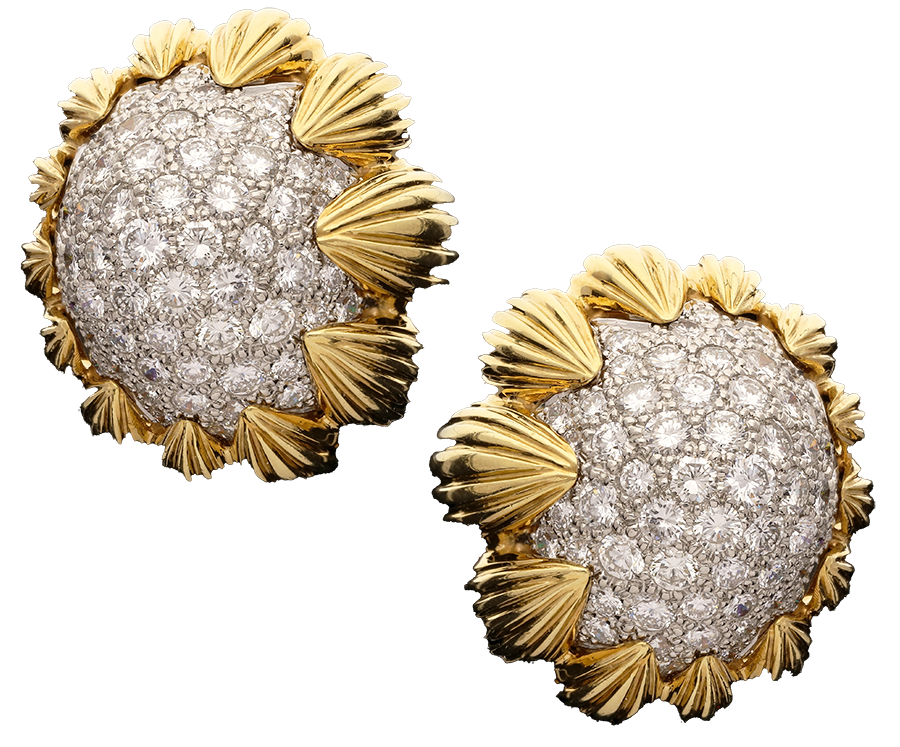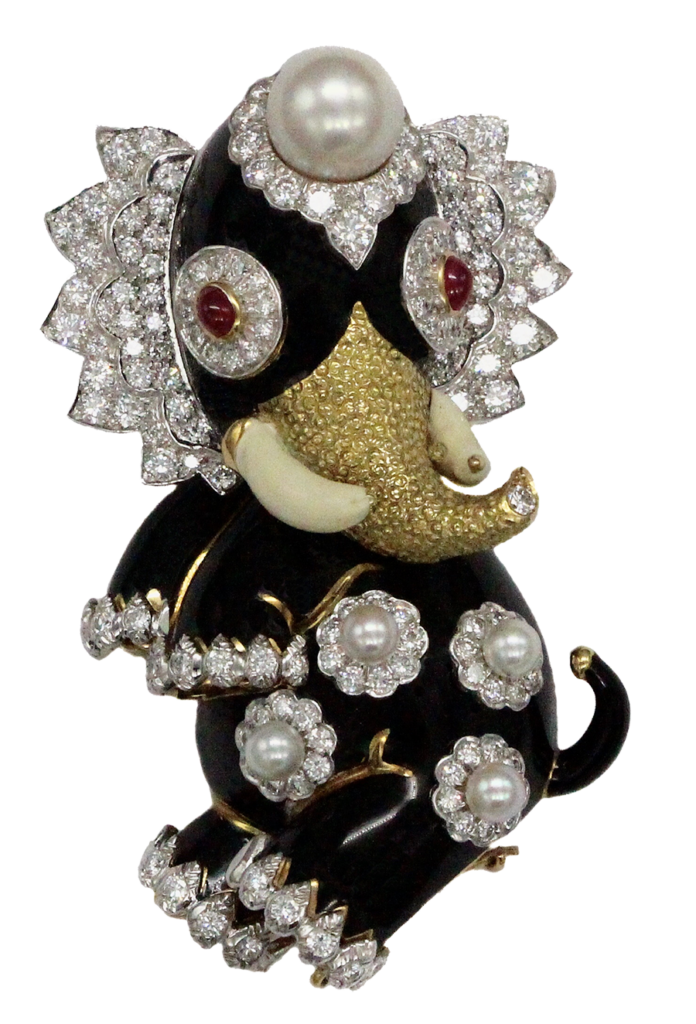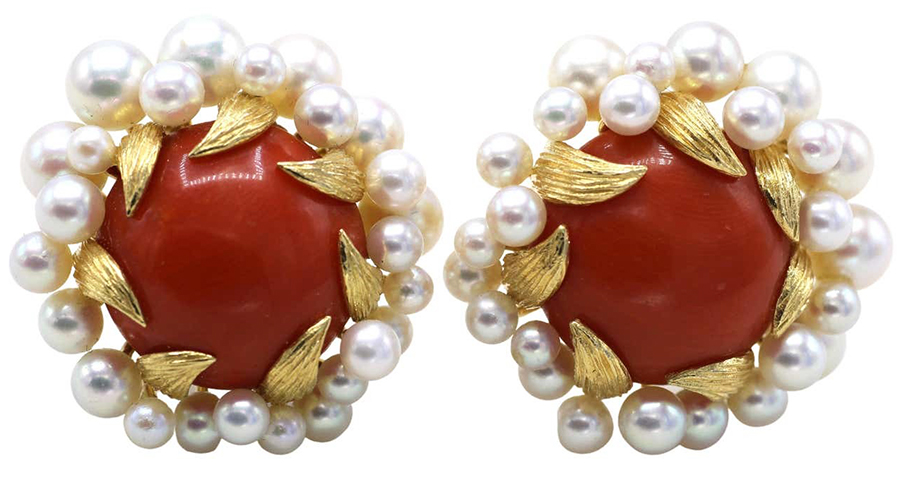Inspired by weekly trips to New York City’s Metropolitan Museum of Art, the streets of Manhattan, architecture and the jewels of ancient civilizations, designer David Webb was greatly influenced by history, his deep curiosity and a desire for knowledge.
Born in Asheville, North Carolina in 1925, Webb showed a talent for jewelry making and design at a very young age. He got his start in the business when he apprenticed in his uncle’s silversmithing shop. When he was just 17 years old (possibly even 16) Webb moved to New York City, where success came quickly for him. Webb got his start in the City repairing jewelry, but it wasn’t long before new opportunities were presented to him.
In 1945 with backing from socialite Antoinette Quilleret, Webb opened his own shop. Three years later he bought out Quilleret and founded David Webb Inc. With his accountant and business partner, Nina Silberstein, Webb set up shop on New York City’s 57th street the “crossroads of fashion and luxury.”
Webb was a self-taught jewelry designer who was fascinated by gold jewelry from ancient Greece, Mesopotamia, Central and South America as well as traditional jewelry from India and China. He reinterpreted the designs and added glyphs and symbols from ancient works in his creations. Webb loved yellow gold and he created an ancient feeling for his jewelry by using special gold alloys with a patinaed look. Another favorite motif for Webb was the Maltese Cross which he fabricated in a variety of imaginative ways.
Bejeweled Beasts
Perhaps the one thing that Webb is best known for is his animal jewelry. He had an extensive reference library that included “The Big Book of Wild Animals” which inspired his zoo of colorful creatures. Webb created his first animal in 1957 — the mythical Indian sea monster Makara. It was a bracelet fabricated in emeralds and gold. By 1963 Webb had a full-on bestiary that included frogs, zebras, monkeys, snakes, elephants, big cats and the legendary chimera.
These creatures were fabricated from gold, enamel and colored gemstones that were sometimes carved. Webb favored turquoise and coral and both of those gems featured prominently in his animals. In 1964, Webb was honored with the Coty American Fashion Critics Award for his jeweled menagerie. Hollywood’s elite from Elizabeth Taylor to Lana Turner were all wearing Webb’s animals. Vogue editor-in-chief Diana Vreeland wore a zebra bracelet, gifted to her by Webb, while the Duchess of Windsor sported a frog bracelet. The zebra eventually became the company’s mascot.
Webb further cemented his reputation as an important American designer in 1962 when First Lady Jackie Kennedy, commissioned Webb to make the official gifts of state for visiting dignitaries: Paperweights featuring American minerals. When Ruth Peltason wrote a book about the designer, she entitled it “David Webb: The Quintessential American Jeweler”.
While enamel, bold color and carved gems were favorites of David Webb, he also pioneered wearing diamonds in the daytime at a time when they were associated with evening and special occasion wear. Webb realized that women were busy and desired jewelry that could take them through the day and into the evening. And he delivered with gold and diamond jewelry that transitioned easily from day to night. Webb also loved rock crystal, sometimes carved, which he considered to be “the one white alternative to diamonds.” He created some of his more dressy jewelry from rock crystal.
Known for his love of color and exuberant designs, David Webb’s star shined brightly, but briefly. In 1975, when he was just 50 years old, Webb passed away from pancreatic cancer. He left behind an archive with over 40,000 drawings and his partner, Nina Silberstein continued to run the business. In 2009, the firm was sold. It is now located on Madison Avenue on Manhattan’s Upper Eastside. The jewelry is still made in the company’s workshop and some of the artisans who work there now have fathers who worked at Webb before them. Drawing upon the archives, artisans interpret Webb’s designs and continue to create fantastical creatures and fantasy jewels for those style makers who are bold enough to wear them.
Featured image (top of page): Turquoise, ruby, diamond and 18-karat gold Chimera bangle, circa 1960s, signed David Webb, courtesy, J.S. Fearnley (@jsfearnley).
Authored by Amber Michelle





